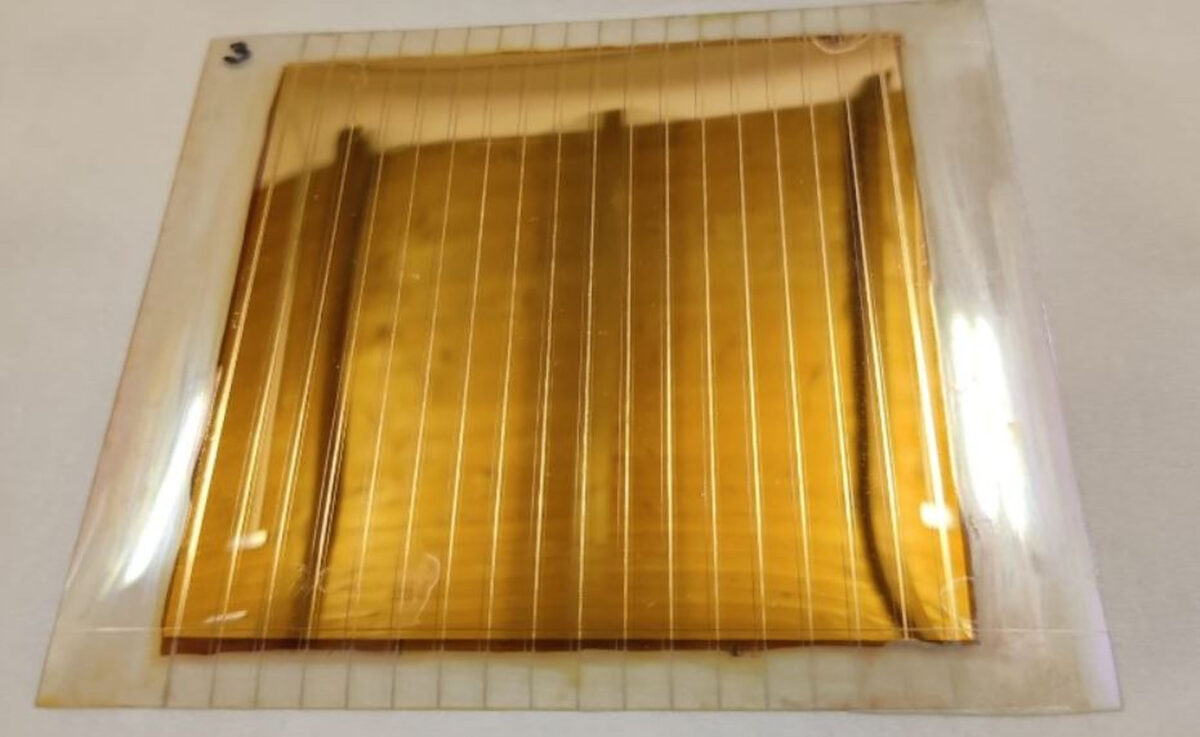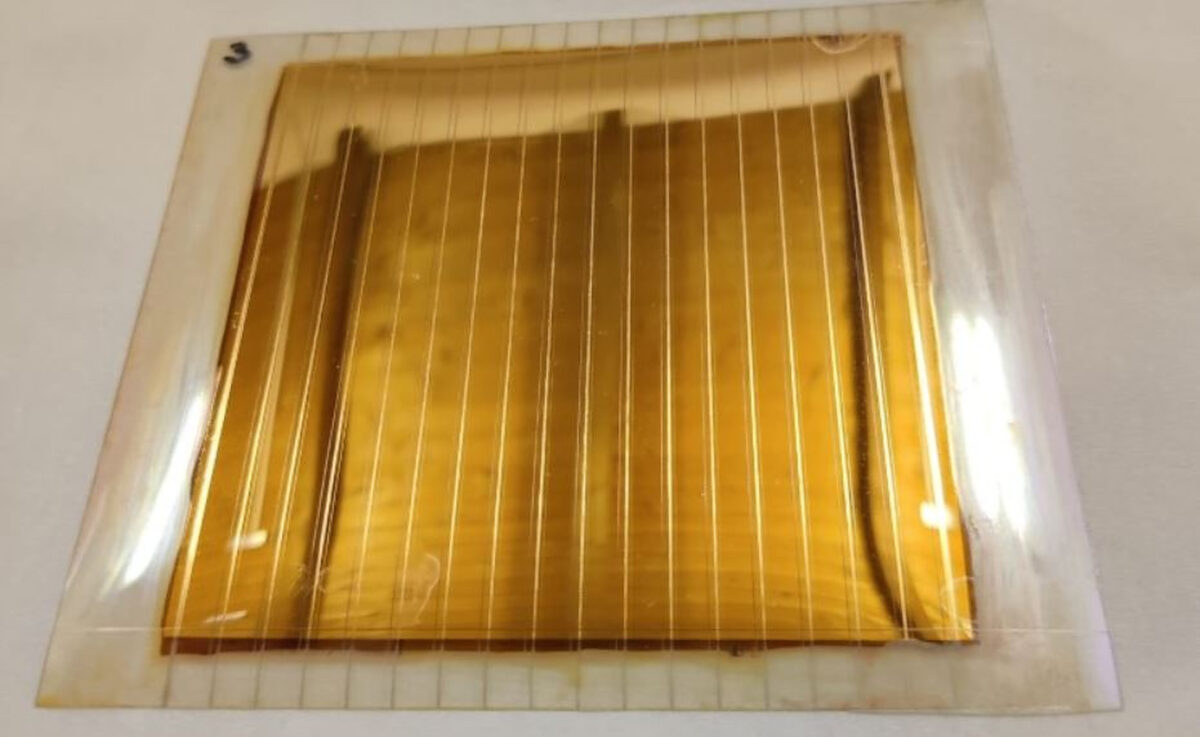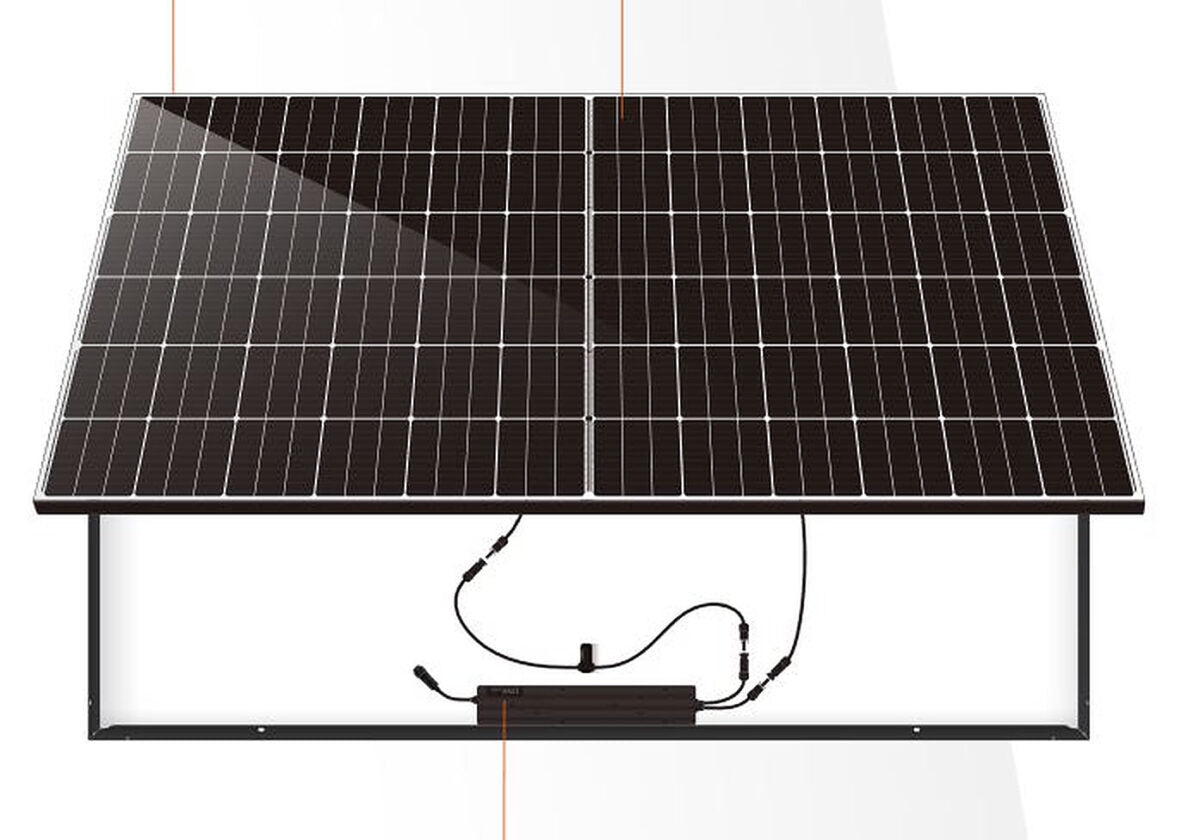https://www.pv-magazine.com/2023/03/31/blade-coated-flexible-perovskite-solar-cell-achieves-14-08-efficiency/
Blade-coated flexible perovskite solar cell achieves 14.08% efficiency

Image: University of Rome Tor Vergata
Scientists at the University of Rome Tor Vergata in Italy have fabricated a flexible perovskite solar module by depositing all layers via blade coating in ambient air.
“All the layers have been produced in ambient conditions with a relative humidity of around 30-40%, so the manufacturing process does not require clean rooms and controlled environments,” researcher Farshad Zafarzadeh told pv magazine. “In addition, the usage of highly toxic solvents has been avoided which is a step towards the sustainability of perovskite solar cells.”
In the paper “All-Blade-Coated Flexible Perovskite Solar Cells & Modules Processed in Air from a Sustainable Dimethyl sulfoxide (DMSO)-based Solvent System,” which was recently published in Sustainable Energy & Fuels, Zafarzadeh and his colleagues described blade coating as a high-throughput deposition method that requires simple equipment and is transferrable to roll-to-roll fabrication, with slight modifications.
“Blade coating of the perovskite layer in ambient environments is only possible by means of hot casting, gas quenching, vacuum extraction, or a combination of these methods to prevent moisture spreading over the perovskite phase,” they said.
In the manufacturing process, the scientists used dimethyl sulfoxide (DMSO), which is a toxic solvent commonly used in perovskite deposition, only for the first step, while for the second step they used isopropyl alcohol (IPA). In this way, DMSO does not remain trapped in the perovskite layer once the deposition is finalized.
They built the cell with an indium tin oxide (ITO) substrate, a tin(IV) oxide (SnO2) buffer layer, a perovskite absorber, and a hole transport layer (HTL) made of poly-triarylamine (PTAA).
“Solar cells are blade coated on large substrates (5×7 cm2) but measured on small scale with 0.09 cm2 active area, and the champion device achieved 14.08% power conversion efficiency,” they said.
Popular content
The Italian group also fabricated small solar modules based on this cell technology and achieved an efficiency of up to 6.58%.
“We demonstrated that this method is upscalable on 13 cm2 × 13 cm2 sizes on flexible substrates. We are now working on the improvement of the modules' performance and further upscaling of devices,” Zafarzadeh stated. “Although the cost analysis is not in the scope of this work, we know that blade coating is a low-cost technique due to its simplicity and small material wastage”
He also claims that the fabrication process can be transferred to roll-to-roll production which enables high-speed, low-cost, and large-scale production. “Not to mention that using flexible substrates substantially reduces the total weight of solar modules which reduces the transportation and maintenance cost,” he said.
In March 2021, the University of Rome Tor Vergata presented a perovskite solar module with a total active area of 42.8 cm2 and aperture area of 50 cm2. The panel was built with 20%-efficient perovskite cells connected in 14 series. It was able to retain 90% of the initial efficiency after 800 hours of thermal stress at 85 C.
Three months later, it unveiled a perovskite solar module with cells based on triple-cation cesium methylammonium formamidinium (CsMAFA). And in April 2022, it presented a perovskite solar panel with a total substrate size of 20 cm × 20 cm and a stabilized power conversion efficiency of 11.9%.
This content is protected by copyright and may not be reused. If you want to cooperate with us and would like to reuse some of our content, please contact: editors@pv-magazine.com.




